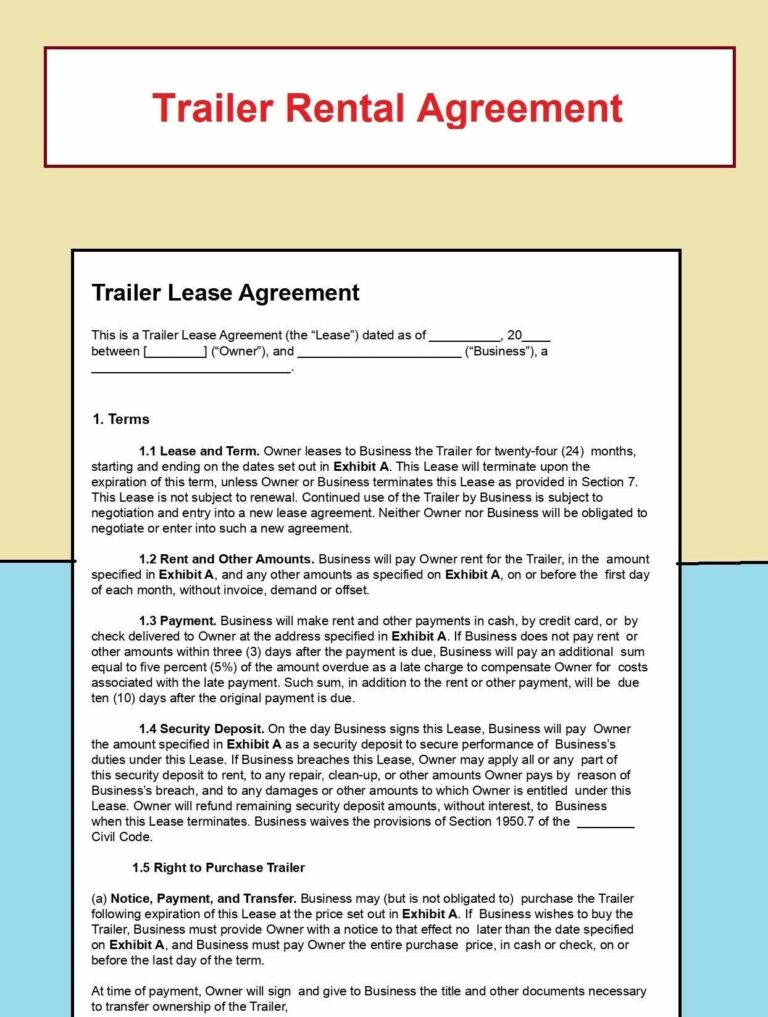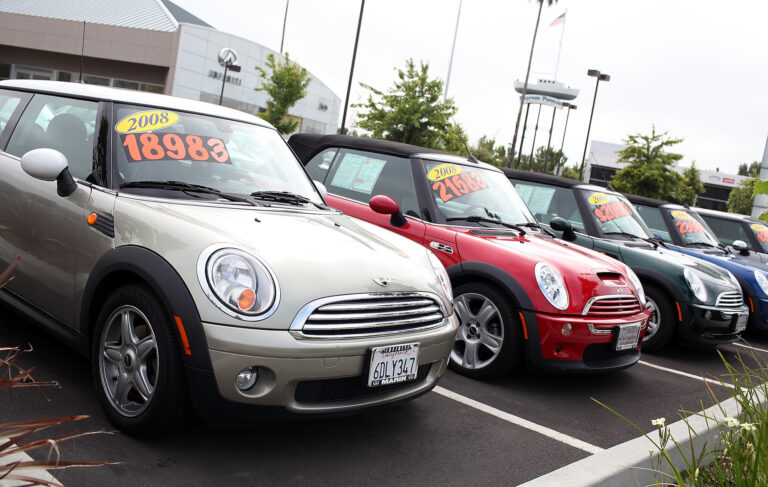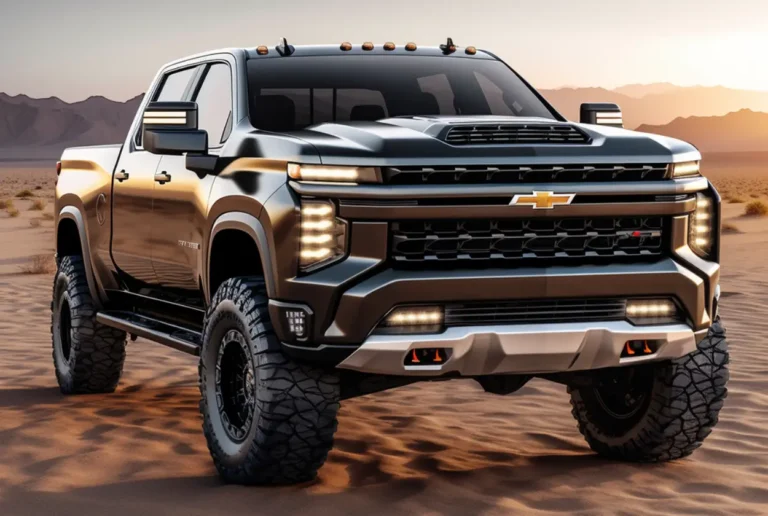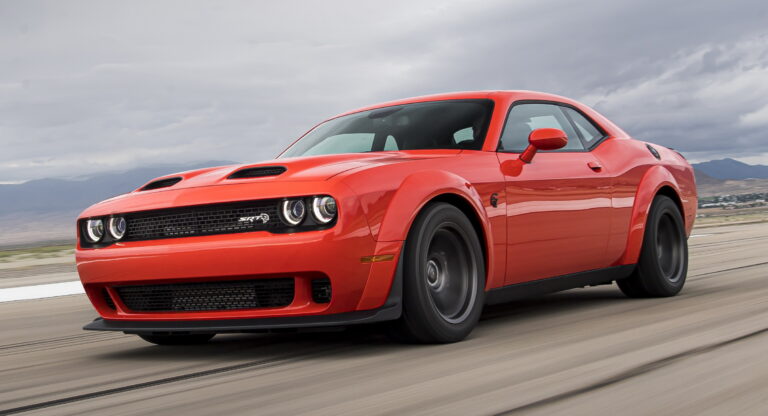Pick Up Truck Parts Name: A Comprehensive Guide to Your Vehicle’s Anatomy
Pick Up Truck Parts Name: A Comprehensive Guide to Your Vehicle’s Anatomy cars.truckstrend.com
The pick-up truck, a quintessential symbol of utility, power, and versatility, has evolved from a humble workhorse into a sophisticated machine capable of tackling everything from arduous construction tasks to comfortable family road trips. At the heart of its remarkable capability lies an intricate network of interconnected components, each playing a crucial role in its overall function. For owners, aspiring mechanics, or simply those curious about what makes these robust vehicles tick, understanding the "Pick Up Truck Parts Name" is not just an academic exercise; it’s essential knowledge for maintenance, troubleshooting, customization, and appreciating the engineering marvel that is your truck.
This comprehensive guide aims to demystify the complex anatomy of a pick-up truck, breaking down its myriad parts into logical categories. By the end of this article, you’ll not only be familiar with the names of key components but also understand their function, importance, and how they contribute to the truck’s performance, safety, and durability.
Pick Up Truck Parts Name: A Comprehensive Guide to Your Vehicle’s Anatomy
I. The Chassis & Frame: The Backbone of Durability
Every pick-up truck begins with its foundation: the chassis and frame. This structural skeleton provides the necessary rigidity and support for all other components, ensuring the vehicle can withstand heavy loads and rough terrain.
- Frame Rails: These are the primary longitudinal beams that run the length of the truck, typically made of high-strength steel. They provide the main support structure.
- Crossmembers: Horizontal beams connecting the frame rails, providing additional rigidity and mounting points for various components like the engine, transmission, and suspension.
- Body Mounts: Rubber or polyurethane mounts that isolate the cab and bed from the frame, reducing noise and vibration for a smoother ride.
- Skid Plates: Protective metal plates mounted underneath the vehicle to shield vital components (like the oil pan, transfer case, or fuel tank) from impacts during off-road driving.
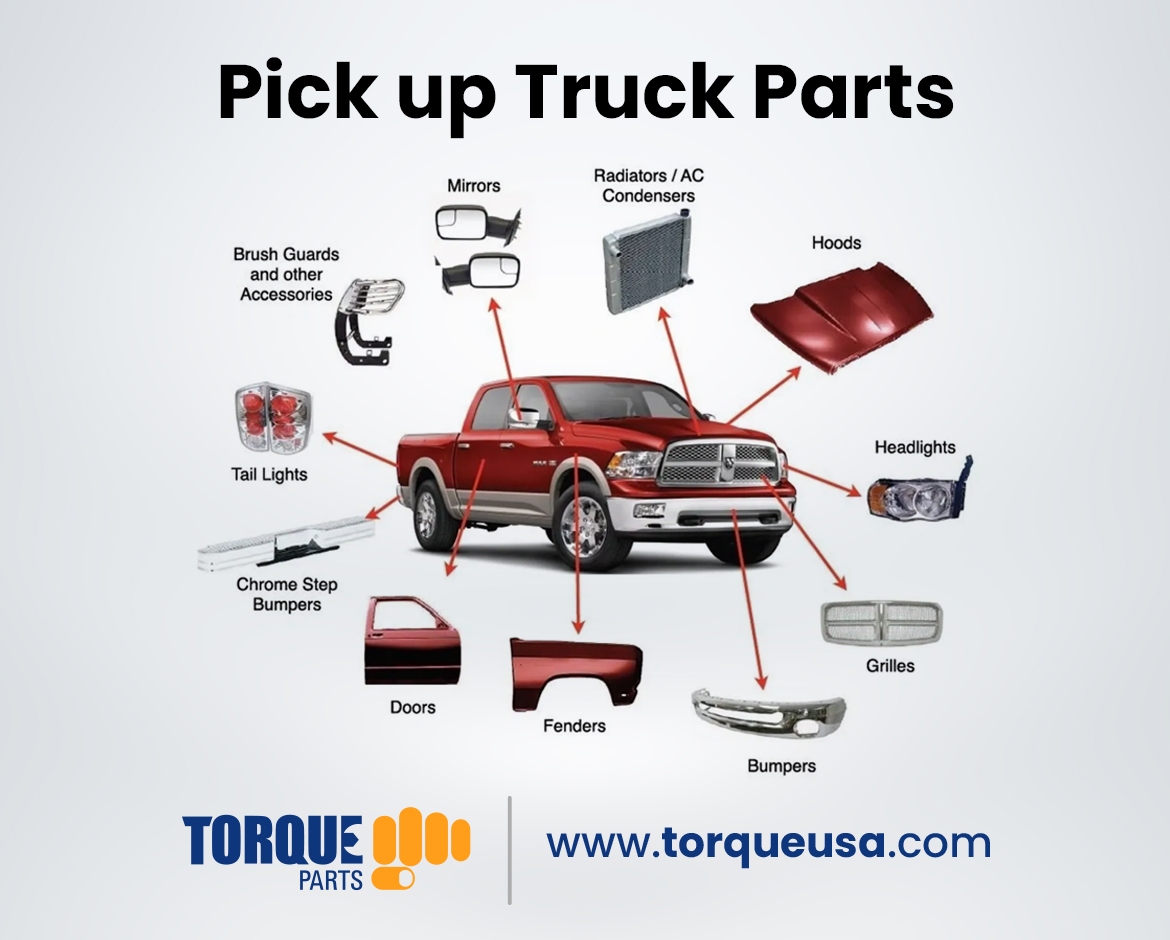
Understanding the frame’s integrity is paramount, as any damage here can compromise the entire vehicle’s safety and performance.
II. Powertrain Components: The Heartbeat and Muscle
The powertrain is the system that generates power and delivers it to the wheels. It’s the true workhorse of your truck.
- Engine: The core power unit.
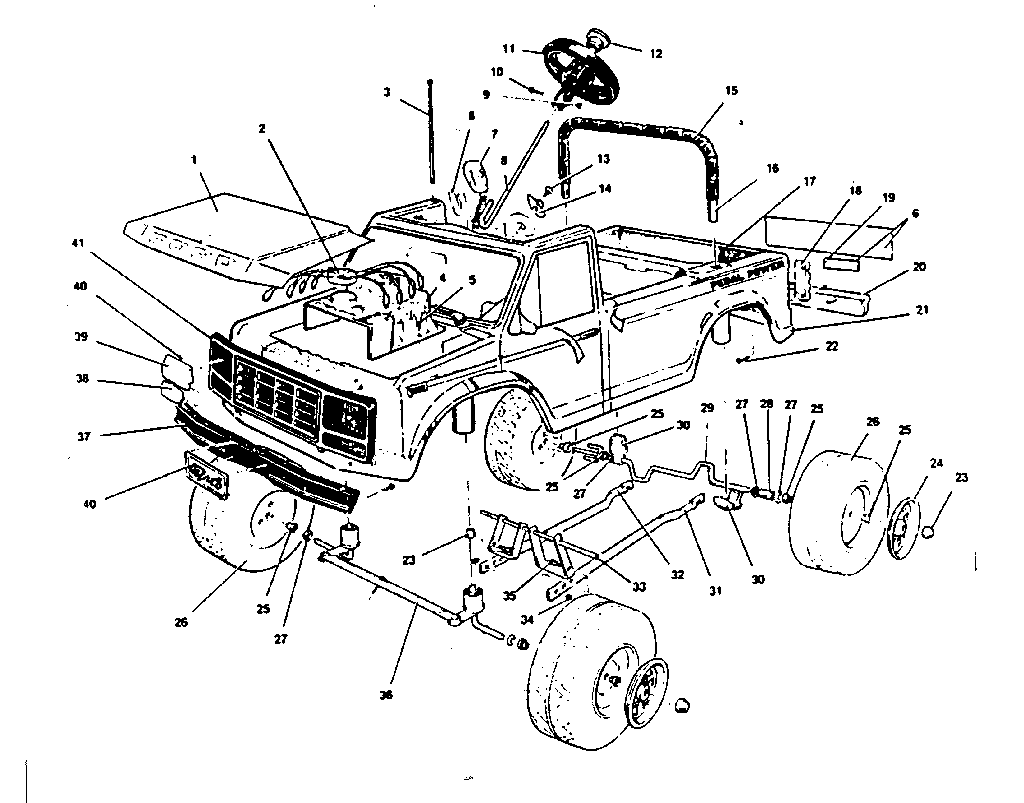
- Engine Block: The main casting that houses the cylinders, pistons, and crankshaft.
- Cylinder Head(s): Sits atop the engine block, containing the valves, camshafts (in overhead cam designs), and spark plugs (for gasoline engines) or injectors (for diesel engines).
- Pistons: Reciprocating components that move up and down within the cylinders, converting combustion energy into mechanical motion.
- Crankshaft: Converts the linear motion of the pistons into rotational motion, which drives the transmission.
- Camshaft(s): Controls the opening and closing of the engine’s intake and exhaust valves.
- Valves (Intake/Exhaust): Regulate the flow of air/fuel mixture into and exhaust gases out of the combustion chambers.
- Turbocharger/Supercharger: Forced induction devices that compress air entering the engine, increasing power output.
- Intake Manifold: Directs air (and sometimes fuel) into the engine’s cylinders.
- Exhaust Manifold: Collects exhaust gases from the cylinders and directs them to the exhaust system.

- Transmission: Manages the power transfer from the engine to the drivetrain, allowing for different speeds and torque outputs.
- Manual Transmission: Requires the driver to manually select gears using a clutch pedal and shift lever.
- Automatic Transmission: Automatically selects gears using a torque converter (fluid coupling) instead of a clutch.
- Drivetrain: The system that transmits power from the transmission to the wheels.
- Driveshaft (Propeller Shaft): Connects the transmission to the differential(s).
- Differential: A gear assembly that allows the wheels on the same axle to rotate at different speeds, crucial for turning.
- Axles (Axle Shafts): Connect the differential to the wheels.
- Transfer Case: (For 4WD/AWD trucks) Allows the driver to switch between 2WD, 4WD high, and 4WD low ranges, distributing power to both front and rear axles.
III. Suspension & Steering: Ride Comfort and Control
These systems work in tandem to provide a comfortable ride, maintain tire contact with the road, and allow the driver to control the vehicle’s direction.
- Suspension Components:
- Shocks/Shock Absorbers: Dampen spring oscillations, controlling vertical wheel movement and preventing excessive bouncing.
- Struts: A combination of a shock absorber and a coil spring in a single unit, common in independent front suspensions.
- Springs (Coil Springs/Leaf Springs): Support the vehicle’s weight and absorb road imperfections. Coil springs are common in front suspensions and some rear, while leaf springs are typically found in the rear of heavier-duty trucks.
- Control Arms (Upper/Lower): Connect the steering knuckle to the frame, allowing for vertical wheel movement.
- Ball Joints: Pivoting connections that allow the steering knuckle to move with the control arms.
- Sway Bar (Anti-Roll Bar): Connects the suspension components on opposite sides of the vehicle to reduce body roll during turns.
- Steering Components:
- Steering Wheel: Driver’s input device.
- Steering Column: Connects the steering wheel to the steering box/rack.
- Steering Box (Recirculating Ball) or Rack and Pinion: Converts rotational input from the steering wheel into linear motion to turn the wheels.
- Tie Rods (Inner/Outer): Connect the steering box/rack to the steering knuckle, allowing the wheels to turn.
- Power Steering Pump/Motor: Assists the driver in turning the wheels, reducing effort.
Proper alignment and regular inspection of these components are crucial for safe handling and tire longevity.
IV. Braking System: Safety First
The braking system is arguably the most critical safety system on any vehicle, designed to slow or stop the truck reliably.
- Brake Pedal: Driver’s input to activate the braking system.
- Master Cylinder: Converts pedal pressure into hydraulic pressure, pushing brake fluid through the lines.
- Brake Lines/Hoses: Tubes that carry hydraulic brake fluid from the master cylinder to the calipers or wheel cylinders.
- Brake Calipers: (Disc Brakes) Clamp brake pads onto the rotor to create friction and slow the wheel.
- Brake Rotors (Discs): Rotating metal discs attached to the wheel hub, squeezed by the brake pads.
- Brake Pads: Friction material that presses against the rotors.
- Brake Drums: (Drum Brakes, often on rear axles of older trucks) A rotating drum that brake shoes press against.
- Brake Shoes: Friction material that presses against the inner surface of the brake drum.
- Wheel Cylinders: (Drum Brakes) Hydraulic cylinders that push the brake shoes against the drum.
- ABS Module/Sensor: Anti-lock Braking System, prevents wheel lock-up during hard braking, maintaining steering control.
Regular inspection and replacement of wear items like pads and rotors are non-negotiable for safety.
V. Electrical System: The Nerves and Brain
The electrical system powers everything from the engine’s ignition to the infotainment system, making it the truck’s nervous system.
- Battery: Stores electrical energy to start the engine and power accessories when the engine is off.
- Alternator: Generates electricity to power the truck’s electrical systems and recharge the battery while the engine is running.
- Starter Motor: An electric motor that cranks the engine to start it.
- Wiring Harness: Bundles of wires that transmit electrical signals and power throughout the vehicle.
- Fuses & Relays: Protective devices that prevent electrical overloads and control various electrical circuits.
- Lighting System: Headlights, taillights, turn signals, brake lights, fog lights, interior lights – essential for visibility and communication.
- Sensors: Numerous sensors monitor engine performance (e.g., Oxygen Sensor, Mass Air Flow (MAF) Sensor, Crankshaft Position Sensor), environmental conditions, and vehicle dynamics, sending data to the ECU.
- ECU/PCM (Engine Control Unit/Powertrain Control Module): The "brain" of the truck, a computer that processes sensor data and controls various engine and transmission functions for optimal performance and efficiency.
VI. Body & Exterior Components: The Outer Shell and Utility
These parts define the truck’s appearance and provide its cargo-carrying capability.
- Cab: The enclosed passenger compartment.
- Roof, Doors, Pillars: Structural components of the cab.
- Windshield & Windows: Provide visibility.
- Truck Bed: The open cargo area at the rear.
- Bed Liner: A protective layer for the truck bed.
- Tailgate: The hinged rear gate of the bed, allowing for easier loading and unloading.
- Tonneau Cover: A cover for the truck bed, protecting cargo from weather and theft.
- Fenders: Body panels over the wheels that protect the vehicle from debris.
- Grille: Front-end component that allows air to flow to the radiator and engine while providing styling.
- Bumpers (Front/Rear): Impact-absorbing structures at the front and rear of the vehicle.
- Side Mirrors: Provide rearward visibility.
- Wheels & Tires:
- Rims/Wheels: The metal or alloy structure the tire mounts onto.
- Tires: Rubber components that provide traction and cushioning.
- Lug Nuts: Fasteners that secure the wheel to the hub.
- TPMS (Tire Pressure Monitoring System) Sensors: Monitor tire pressure.
VII. Interior Components: Comfort and Functionality
The interior is where the driver and passengers interact with the truck, designed for comfort, safety, and control.
- Dashboard/Instrument Panel: Houses the gauges, warning lights, and various controls.
- Instrument Cluster: Displays critical information like speed, RPM, fuel level, and engine temperature.
- Steering Wheel: Driver’s primary control for steering, often with integrated controls for audio, cruise control, etc.
- Seats & Seatbelts: Provide comfort and safety for occupants.
- HVAC System: Heating, Ventilation, and Air Conditioning system (blower motor, AC compressor, evaporator, condenser) for climate control.
- Infotainment System: Audio, navigation, and connectivity features.
- Pedals: Accelerator, Brake, and (for manual transmissions) Clutch pedals.
- Gear Selector/Shifter: For selecting drive modes or gears.
VIII. Common Aftermarket & Accessory Parts: Customization & Utility
Beyond standard OEM parts, a vast market exists for aftermarket components that enhance performance, utility, or aesthetics.
- Lift Kits/Leveling Kits: Raise the vehicle’s ride height, often for increased ground clearance or to level the front and rear.
- Performance Exhaust Systems: Improve exhaust flow for increased horsepower and a more aggressive sound.
- Cold Air Intakes: Improve engine breathing by supplying cooler, denser air, leading to modest power gains.
- Winches: Mounted on the front bumper, used for vehicle recovery or pulling heavy objects.
- Brush Guards/Grille Guards: Protect the front end from impacts.
- Running Boards/Nerf Bars: Steps to assist entry and exit, and can offer minor side protection.
- Bed Extenders/Toolboxes: Enhance cargo capacity or provide secure storage.
- Roof Racks: For carrying additional gear on the roof.
- LED Light Bars/Auxiliary Lights: Improve nighttime visibility.
Practical Advice and Actionable Insights
Knowing the names of truck parts is the first step towards being a responsible and informed truck owner. Here’s why it matters and what you can do:
- Effective Communication with Mechanics: When you can accurately describe a problem using proper part names, you save time and prevent misdiagnoses, leading to more efficient and accurate repairs.
- DIY Maintenance and Repairs: For the mechanically inclined, identifying parts by name is crucial for performing basic maintenance (e.g., changing oil filters, checking brake pads) or even more complex repairs. Online tutorials and service manuals become far more accessible.
- Informed Purchasing Decisions: Whether buying replacement parts or aftermarket accessories, knowing the correct terminology ensures you get compatible components, whether OEM (Original Equipment Manufacturer) for guaranteed fit and quality, or aftermarket for performance or cost savings.
- Troubleshooting: Many common truck issues have tell-tale signs. Understanding which part might be failing (e.g., a "clunk" from the suspension points to worn "ball joints" or "control arm bushings") helps narrow down the problem.
- Regular Inspections: Make it a habit to visually inspect accessible components like tires, fluid levels, belts, and hoses. Familiarity with part names helps you know what you’re looking at and what signs of wear to spot.
- Consult Your Owner’s Manual: It’s a goldmine of information on maintenance schedules, fluid types, and specific part locations relevant to your truck’s make and model.
Sample Pick Up Truck Parts Price Table
Please note: Prices are highly variable based on truck make/model/year, part quality (OEM vs. aftermarket), labor costs, and geographical location. This table provides estimated ranges for common replacement parts.
| Part Name | Function | Estimated Price Range (Part Only, USD) |
|---|---|---|
| Engine (Remanufactured) | Generates power for the vehicle | $2,500 – $8,000+ |
| Automatic Transmission | Transfers power to wheels, selects gears | $1,500 – $4,000+ |
| Brake Pads (Set, Front) | Friction material for stopping | $40 – $150 |
| Brake Rotors (Each) | Disc for brake pads to clamp onto | $50 – $200 |
| Shock Absorber (Each) | Dampens suspension oscillations | $30 – $150 |
| Strut Assembly (Each) | Combines shock and spring | $100 – $400 |
| Alternator | Charges battery, powers electrical system | $150 – $500 |
| Starter Motor | Cranks engine to start | $100 – $400 |
| Fuel Pump | Delivers fuel from tank to engine | $100 – $500 |
| Radiator | Cools engine coolant | $100 – $400 |
| Headlight Assembly (Each) | Provides forward illumination | $100 – $800+ |
| Tailgate (Bare) | Rear gate of truck bed | $200 – $1,000+ |
| Tire (All-Season, 1) | Provides traction and support | $120 – $350+ |
| Battery (12V) | Provides starting power, stores energy | $100 – $250 |
| Water Pump | Circulates engine coolant | $50 – $250 |
| Oxygen Sensor (O2 Sensor) | Monitors exhaust gas oxygen levels | $40 – $150 |
| Control Arm (Each) | Connects suspension to frame | $60 – $250 |
| Tie Rod End (Each) | Connects steering linkage to wheel | $20 – $100 |
| Muffler | Reduces exhaust noise | $50 – $200 |
| Catalytic Converter | Reduces harmful exhaust emissions | $300 – $1,500+ (Highly variable) |
Frequently Asked Questions (FAQ)
Q1: What’s the difference between OEM and aftermarket parts?
A1: OEM (Original Equipment Manufacturer) parts are identical to the parts your truck came with from the factory, designed and produced by the original manufacturer or their direct suppliers. They offer guaranteed fit, function, and often come with a warranty. Aftermarket parts are produced by companies other than the original manufacturer. They can range from direct replacements to performance upgrades, often at a lower cost, but quality and fit can vary significantly.
Q2: How often should I replace my brake pads and rotors?
A2: This depends heavily on driving style, vehicle weight, and the type of driving (city vs. highway). Generally, brake pads last between 30,000 to 70,000 miles. Rotors may last longer, sometimes through two sets of pads. It’s best to have them inspected during every oil change or at least annually. Listen for squealing, grinding, or feel pulsation when braking.
Q3: What are the signs of a failing alternator?
A3: Common signs include dimming headlights, a battery warning light on the dashboard, a dead battery (especially after a jump start), strange noises (whining or grinding) from under the hood, or accessories not working properly.
Q4: Can I install a lift kit myself?
A4: While some basic leveling kits can be installed by a mechanically inclined DIYer with proper tools and safety equipment, full lift kits are complex. They often require specialized tools, knowledge of suspension geometry, and post-installation alignment. It’s generally recommended to have a professional shop install full lift kits to ensure safety and proper vehicle dynamics.
Q5: What is a differential, and why is it important?
A5: A differential is a crucial gear assembly in the drivetrain that allows the wheels on the same axle to rotate at different speeds. This is essential when turning, as the outer wheel needs to travel a greater distance than the inner wheel. Without a differential, the wheels would skid or bind, making turns difficult and damaging tires and drivetrain components.
Q6: What’s the purpose of the catalytic converter?
A6: The catalytic converter is an emission control device located in the exhaust system. It contains precious metals (platinum, palladium, rhodium) that act as catalysts to convert harmful pollutants in the exhaust gases (like carbon monoxide, hydrocarbons, and nitrogen oxides) into less harmful substances (like carbon dioxide, water vapor, and nitrogen).
Conclusion
The pick-up truck is a marvel of engineering, a complex tapestry of meticulously designed and interconnected parts working in harmony. From the robust frame that forms its foundation to the intricate electrical systems that power its intelligence, each component plays an indispensable role in its performance, safety, and versatility.
Understanding the names and functions of these parts empowers truck owners to be more informed, proactive, and confident in their vehicle’s care. Whether you’re troubleshooting a minor issue, planning an upgrade, or simply engaging in conversation with a mechanic, this knowledge enhances your ownership experience. By appreciating the anatomy of your pick-up truck, you not only ensure its longevity and reliability but also deepen your connection to this iconic and indispensable machine.

